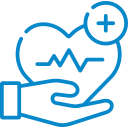Drinking alcohol is common throughout most areas of the United States. Most adults in the US report drinking from time to time. Alcohol is available in stores, at social events, in restaurants, and just about anywhere adults gather.
Because alcohol use is so common and accepted in our culture, it can be challenging to determine when your drinking has crossed the line into a problematic habit. Some trusted news outlets even report the health benefits of having a daily drink. Generally, health experts advise people to drink moderately–but what does this mean?
Most medical professionals agree that it is essential to understand the risks associated with heavy drinking and drink only in moderation. This article will explore this advice.
What you will learn:
- The definition of moderate drinking
- The signs of heavy drinking
- The risks of alcohol abuse
- How to spot the signs of alcohol abuse or addiction
- Where to find treatment for alcohol use disorder
Contact the Carolina Center for Recovery specialists now to learn about our comprehensive treatment and support programs. Our intake staff is happy to answer your questions or help you to schedule an intake evaluation. Take the first step toward your healthier future by contacting us today.
What is Moderate Drinking?
Alcohol is prevalent in our society. Alcoholic beverages are available at home, in restaurants, at sporting events, and at social gatherings. After-work happy hours, concerts, and dinners with friends may include alcohol consumption.
With all the alcohol available, it can be hard for people to recognize when their drinking has become problematic. The Centers for Disease Control (CDC) recommends that people pay attention to their alcohol consumption and limit their drinking. It advises people who drink to do so “in moderation.” But what does this mean?
According to the CDC’s guidelines, moderate drinking means:[1]
- One drink a day for women (or fewer)
- Two drinks per day for men (or fewer)
A “drink” is not just any alcoholic beverage. It is a specific unit of measurement. The CDC defines a “drink” as:[2]
- 12 ounces of beer
- 5 ounces of wine
- 8 ounces of malt liquor
- 1.5 ounces of distilled spirits (vodka, rum, tequila, etc.)
Considering these guidelines, many standard “drinks” restaurants serve contain more than one serving of alcohol. For example, a pint of beer (16 ounces) would contain more than a serving of alcohol, according to the CDC’s guidelines. A large glass of wine (as much as 10 ounces or more in some restaurants) may contain two or more servings of alcohol, according to the CDC’s guidelines.
Heavy drinking is a pattern of excessive alcohol consumption over time. The CDC defines heavy drinking as:[3]
- Eight or more drinks a week for women
- Fifteen or more drinks per week for men
Research has found a link between heavy drinking and several severe health problems. These risks of long-term alcohol abuse include an increased likelihood of developing liver disease, heart disease, and several types of cancer, including breast cancer.
Heavy drinking is also associated with a risk of developing alcohol addiction. Heavy drinkers who do not seek treatment to stop may develop tolerance, then physical dependence.
Binge drinking is another problematic pattern of drinking that can cause immediate and long-term harm. Binge drinking means consuming a large amount of alcohol in a short period. While binge drinking is not as strongly associated with alcohol dependence in the same way heavy drinking is, it puts people at increased risk of accidents, assault, legal problems, and overdose.
Recovering from alcohol use disorder (AUD) can be very challenging. People with alcohol dependence typically require intensive medical treatment, therapy, and education to quit drinking.
Signs of Alcohol Use Disorder
The National Institutes of Health and the CDC recommend limiting the amount of alcohol you consume. The 2020-2025 dietary guidelines for Americans also recommend moderate drinking, if any.[4] Paying attention to your alcohol consumption is critical. Knowing the signs of problematic drinking is also crucial to protecting your long-term health.
Here are some of the signs of alcohol abuse and addiction:[5]
- Developing tolerance to alcohol, meaning you need to drink a lot to feel “buzzed” or that you can drink a lot without appearing drunk
- Giving up hobbies, interests, or relationships because of your drinking
- Drinking more often
- Avoiding social events if alcohol is not allowed or offered
- Isolating or only spending time with others when drinking
- Lying about your drinking or hiding it
- Drinking at inappropriate times, such as in the morning, at work, or alone
- Neglecting your responsibilities at work, home, or school
- Having cravings for alcohol
- Experiencing withdrawal symptoms (tremors, anxiety, insomnia, sweating, nausea) when you stop drinking
People with alcohol use disorder often continue to drink, even when facing serious legal, social, or medical consequences. Being realistic about your alcohol use and seeking treatment are essential to avoiding long-term harm related to drinking.
Even if you believe you are a moderate drinker, it is important to check in regularly with yourself about your drinking. Pay attention to how much and how often you drink. Watch for signs of alcohol abuse and seek treatment as soon as you recognize a problem.
Find Treatment Now
If you or someone you love struggles with alcohol abuse or addiction, you are not alone. Reach out to the Carolina Center for Recovery specialists to explore our programs or schedule an intake assessment.
References:
- Centers for Disease Control and Prevention (CDC): About Moderate Alcohol Use
- CDC: About Standard Drink Sizes
- CDC: What is Excessive Drinking?
- USDA-HHS Dietary Guidelines for Americans: USDA-HHS Response to the National Academies of Sciences, Engineering, and Medicine: Using the Dietary Guidelines Advisory Committee’s Report to Develop the Dietary Guidelines for Americans, 2020-2025
- National Institute on Alcohol Abuse and Alcoholism (NIAAA): Understanding Alcohol Use Disorder










